Search the Special Collections and Archives Portal
Search Results
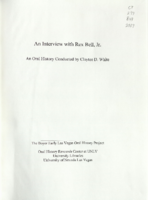
Transcript of interview with Rex Bell Jr. by Claytee D. White, March 2, 2010
Date
2010-03-02
Archival Collection
Description
Growing up on the Walking Box Ranch as the son of movie stars Rex Bell and Clara Bow, attending law school, work in Las Vegas, race relations, and owning a law practice.
Text
#70767: A steel topping-off ceremony celebrating the modernization of the Thomas & Mack Center on the UNLV campus on Tuesday, March 22, 2016. Attendees signed a beam that was later placed on the under-construction west wing addition which will feature 35,000 sq. ft. of meeting and event space., 2016 March 22
Level of Description
File
Archival Collection
University of Nevada, Las Vegas Creative Services Records (2010s)
To request this item in person:
Collection Number: PH-00388-05
Collection Name: University of Nevada, Las Vegas Creative Services Records (2010s)
Box/Folder: Digital File 00
Collection Name: University of Nevada, Las Vegas Creative Services Records (2010s)
Box/Folder: Digital File 00
Archival Component

Signage adorns fencing along Las Vegas Boulevard touting the Resorts World Las Vegas project with tower in background, looking west in Las Vegas, Nevada: digital photograph
Date
2020-02-06
Archival Collection
Description
Photographed as part of the UNLV Special Collections and Archives' Building Las Vegas collecting initiative started in 2016. This photo series documents ongoing construction work at the Resorts World Las Vegas site.
Image

Signage adorns fencing along Las Vegas Boulevard touting the Resorts World Las Vegas project with tower in background, looking west in Las Vegas, Nevada: digital photograph
Date
2020-02-06
Archival Collection
Description
Photographed as part of the UNLV Special Collections and Archives' Building Las Vegas collecting initiative started in 2016. This photo series documents ongoing construction work at the Resorts World Las Vegas site.
Image
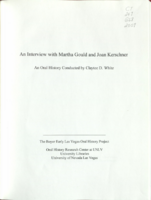
Transcript of interview with Martha Goulda and Joan Kerschner by Claytee D. White, October 26, 2005
Date
2005-10-26
Archival Collection
Description
Martha Gould and Joan Kerschner have been instrumental in most phases of library development in Nevada - from the branch to the state library. Their stories are fascinating and cover the techniques of moving a physical library to installing massive computer systems. They became librarians as young women and worked their entire careers in the field. Their memories add depth and profound meaning to the work of librarians. Gould grew up in a small mill town on the Sugar River and attended the University of Michigan. A librarian at Dartmouth College gave her a job and then insisted that she return to school for a master's degree. She earned her MS in Library Science from Simmons College. Kerschner hails from the Midwest, growing up in Abe Lincoln country. As a young girl, she went into their little Carnegie Library to rest and to view photographs on the stereograph while in town shopping with her family. She attended college across the river at Kentucky Wesleyan College and then earned a master's in library science at Indiana University. Martha and Joan have lobbied and testified before assembly committees to help bring libraries in Nevada to their current standing. This interview is about serious work told by two women, one who became state librarian, who look back over their many accomplishments with laughter and great joy.
Text
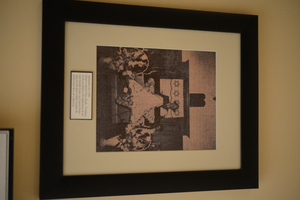
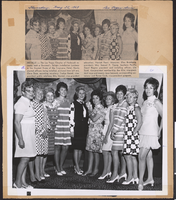

Transcript of interview with Frank Leone by Lisa Gioia-Acres, November 13, 2007
Date
2007-11-13
Archival Collection
Description
Frank Leone was born in Philadelphia, Pennsylvania. he bagan playing paino as a young child. Frank earned degrees in music and moved to Las Vegas in 1967. He played at various casinos, played with famous singers such as Frank Sinatra, Steve Lawrence and Eydie Gorme, and Elvis Presley, and he conducted the Berlin Synphony and the London Philharmonic. Frank was a board member and president of the Musicians Union.
Text
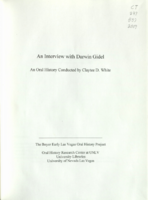
Transcript of interview with Darren Gidel by Claytee White, October 21, 2009
Date
2009-10-21
Archival Collection
Description
Darwin Gidel, born in 1924, grew up in Rockwell City, Iowa. He describes his childhood activities, schooling, and the jobs he held as a teenager. After graduating from high school in June of '42, Darwin immediately joined the military. His basic training took him from Minneapolis to Missouri, after which he was stationed in Nebraska, California, Florida, and South Carolina for further training. As he recalls his early military training, Darwin also evokes the patriotic fervor that gripped the country. He shares stories about the kindnesses he and many other enlistees received from individuals and families, ranging from rides to dinners to overnights. Darwin's overseas assignment was in London, England, beginning in November of 1943. He vividly recalls the bombing raids he flew and describes them from beginning to end. His B-l 7 was shot down over Belgium in March of 1944, and he and eight other crew members were held as POWs for eleven months. Much of Darwin's incarceration was in a Luftwaffe Hospital in Brussels, where his injured leg was removed. His memories include hospital personnel, solitary confinement, interrogation, and later being moved around to many different prisons in Germany. He clearly recalls relationships among prisoners, the configuration of German prisons, types of food served to inmates, and finally his repatriation from Annenberg Castle in Germany. After the war, Darwin earned a degree in accounting on the Gl Bill, which eventually led to general administration work in Sacramento. Along the way he married and had four children. After his wife passed away in the late seventies. Darwin eventually relocated to Las Vegas and remarried. He describes the city, recalls the small town atmosphere, and compares the impersonal bottom-line attitude of modem casinos to the folksy, welcoming feel of those establishments in the early eighties.
Text
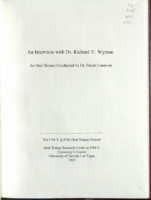
Transcript of interview with Dr. Richard V. Wyman by Dr. David Emerson, February 27, 2006
Date
2006-02-27
Archival Collection
Description
Dr. Richard V. Wyman was born in Painesville, Ohio, and lived there until he joined the navy in 1943 at the age of 17. His father got into real estate and insurance in Painesville. Richard's mother graduated from Ohio State with a degree in home economics, worked until she married, and then devoted her life to her family. In high school, Dick took college prep classes. A month before he graduated he joined the Navy and was sent to college part of the time. He got out of the Navy in 1946 and continued on in college with help from the 52-20 club, a type of GI bill. He studied geology in the night school division of Western Reserve. He met his future wife Anne during this time and they were both admitted to Michigan State grad school. After graduate school, Richard and his wife moved to South America where he had been offered a job. His wife eventually taught grade school there, K through 8. They moved back to Prescott, Arizona, where Dick was offered a job with New Jersey Zinc. Art Still then hired him to work for Western Gold and Uranium and the Golden Crown Mining Company, so Richard and Anne moved to St. George, Utah, with their son Bill. In 1959 Dick met with Don McGregor who hired him to build the Marshmallow Tunnel at the Nevada Test Site. He also built the Exchequer Tunnel for the Sunshine Mine in Idaho, and a tunnel in Merced, California. Eventually McGregor asked him to return to the Test Site to work on Project Pile Driver. In 1969 Herb Wells offered Richard a job at UNLV teaching in engineering. He taught statics, strength and materials, surveying, field mapping and geology. He later added engineering economics, engineering management, economic geology, field geology and mineralogy. Richard took a couple of terms as chair of science and engineering, sharing that responsibility with Herb Wells, Bob Skaggs, Ray Martinez, and John Tryon. The program eventually had three civil engineers and could apply to ABET for accreditation. Dick was chair at the time, motivating the faculty to gather everything they needed for the inspections. In the '80s, the Engineering Advisory Council helped the faculty develop a plan for a new engineering building. Faculty members worked with the architect to make sure those classrooms and labs had everything they needed. After moving into the new building, civil engineering forged ahead, creating a PhD program. Over the years, Dick saw the splitting up of the old College of Science, Math, and Engineering into separate disciplines and watched the number of graduates increase from 10 to between 30 and 50. After he retired from UNLV in 1992, Dick did ABET evaluations for about eight years.
Text
Pagination
Refine my results
Content Type
Creator or Contributor
Subject
Archival Collection
Digital Project
Resource Type
Year
Material Type
Place
Language
Records Classification
